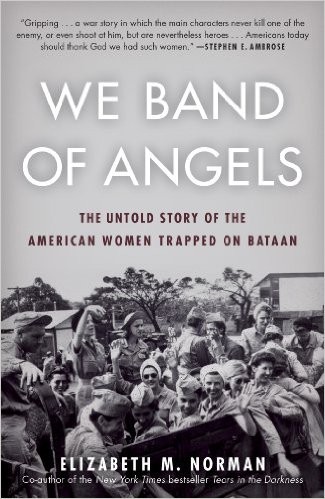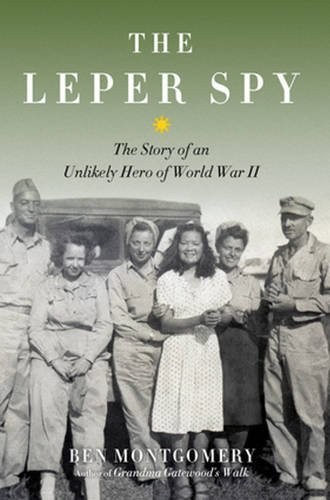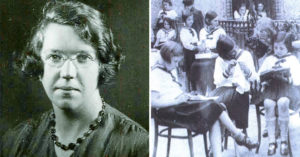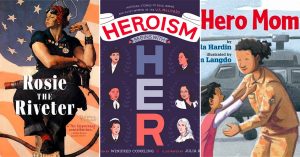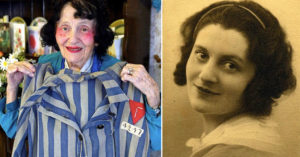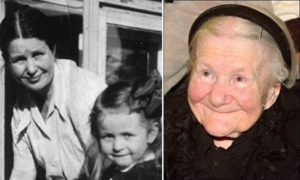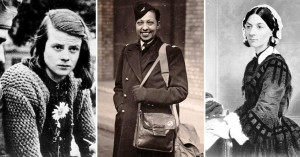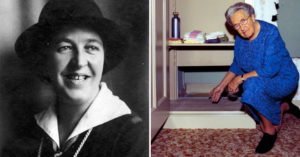Through years of starvation, illness, and fear, the women continued to work together as a nursing unit, caring for thousands of people imprisoned with them.
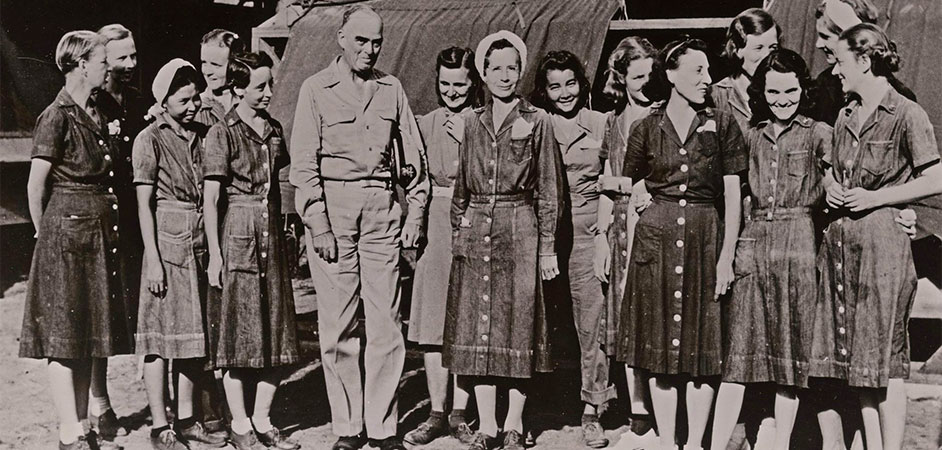 In 1942, 77 American Army and Navy nurses were captured by the Japanese, marking the beginning of what would become one of the greatest, yet little known, stories of heroism and sacrifice during World War II. Incredibly, every single woman survived three long years of starvation, illness, and fear as prisoners of war, all while continuing to work as a nursing unit, providing medical care to the thousands of people imprisoned alongside them. "They were a tough bunch. They had a mission," says Lieutenant Colonel Nancy Cantrell, an historian with the Army Nurse Corps. "They were surviving for the boys… and each other. That does give you a bit of added strength."
In 1942, 77 American Army and Navy nurses were captured by the Japanese, marking the beginning of what would become one of the greatest, yet little known, stories of heroism and sacrifice during World War II. Incredibly, every single woman survived three long years of starvation, illness, and fear as prisoners of war, all while continuing to work as a nursing unit, providing medical care to the thousands of people imprisoned alongside them. "They were a tough bunch. They had a mission," says Lieutenant Colonel Nancy Cantrell, an historian with the Army Nurse Corps. "They were surviving for the boys… and each other. That does give you a bit of added strength."
When American Army and Navy nurses were first stationed in the Philippines early in the war, it seemed like a tropical paradise. The weather was beautiful, the duties were light, and there was plenty of free time to enjoy golf, fine dining, and dates and parties with the soldiers. Nursing also provided them with an alternative career to the restricted options available to women: "Teaching and office work held little appeal," says Elizabeth M. Norman, author of We Band of Angels: The Untold Story of the American Women Trapped on Bataan. "The former meant taking care of someone else’s children, the latter someone else’s man." They took pride in their professionalism, but no one expected that they would ever see combat.
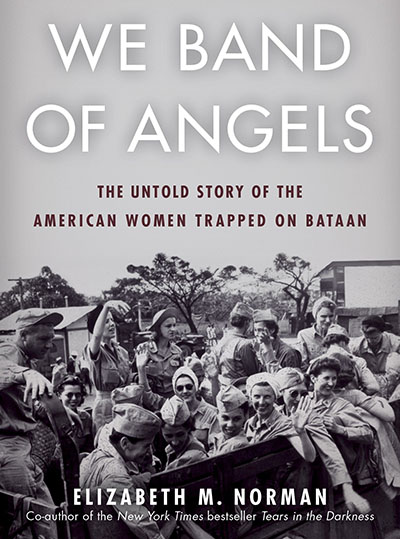 Everything changed on December 8, 1941, when word came about the Japanese attack on Pearl Harbor in Hawaii. As the nurses talked nervously, Josephine Nesbit, who was serving her second tour with the Army Nurse Corps and was second-in-command for the nurses in the Philippines, spoke up. "Girls, you’ve got to sleep today," she declared. "You can’t weep and wail over this, because you have to work tonight." As she predicted, that evening, Japanese planes began bombing Manila. For the first time, the nurses saw brutal combat injuries flood into their wards. As it became obvious that Manila would fall, the nurses were evacuated to Corregidor and Bataan, where they set up two jungle hospitals, the first open-air wards run by Americans since the Civil War. Diseases like malaria and dysentery became commonplace, but the nurses stayed at their posts, treating the sick and the injured as best they could.
Everything changed on December 8, 1941, when word came about the Japanese attack on Pearl Harbor in Hawaii. As the nurses talked nervously, Josephine Nesbit, who was serving her second tour with the Army Nurse Corps and was second-in-command for the nurses in the Philippines, spoke up. "Girls, you’ve got to sleep today," she declared. "You can’t weep and wail over this, because you have to work tonight." As she predicted, that evening, Japanese planes began bombing Manila. For the first time, the nurses saw brutal combat injuries flood into their wards. As it became obvious that Manila would fall, the nurses were evacuated to Corregidor and Bataan, where they set up two jungle hospitals, the first open-air wards run by Americans since the Civil War. Diseases like malaria and dysentery became commonplace, but the nurses stayed at their posts, treating the sick and the injured as best they could.
Bataan fell in April of 1942, and it was obvious that Corregidor would not hold much longer. Knowing that there was not enough time to evacuate all of her nurses, Captain Maude C. Davison, the chief nurse of the Philippine department, joined Colonel Wibb Cooper, the ranking medical officer, in creating a list of twenty nurses who would receive priority for evacuation. Her nurses later noted that, although Davison insisted that the selections were random, she had sent home all of the women who were ill, injured, or otherwise unlikely to be able to withstand lengthy captivity.
When the Allies surrendered the Philippines to the Japanese army, Davison led the remaining 66 nurses to the Santo Tomas Internment Camp in Manila, one of the notoriously harsh prison camps run by the Japanese military. There, they joined 11 Navy nurses who, under the command of Lt. Laura M. Cobb, had stayed in Manila while it fell to support the patients who could not be moved. In the camp, the nurses agreed that they would continue to provide medical care to their fellow prisoners. Davison maintained the same discipline in the prison camp that she had while they were stationed in Manila, setting daily shifts of at least four hours, even as their captors cut their rations to 700 calories a day. "I have always known that if I could survive that, I could survive anything," Lieutenant Mildred Dalton Manning later said.
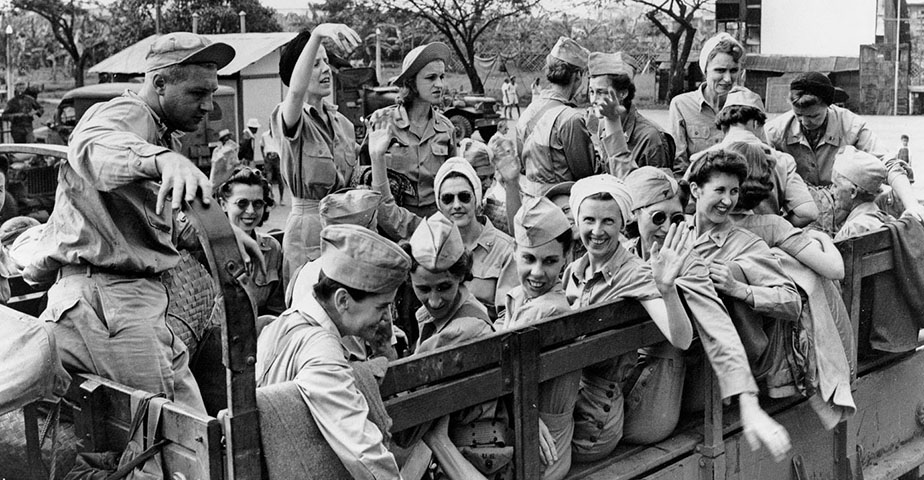 U.S. Army Nurses from Bataan and Corregidor, freed after three years imprisonment in the Santo Tomas Interment Camp.
U.S. Army Nurses from Bataan and Corregidor, freed after three years imprisonment in the Santo Tomas Interment Camp.By January 1945, with Japanese losses mounting, the situation in the camp was dire. The nurses had resorted to eating weeds, roots, flowers, and slugs; patients in their care regularly died of malnutrition. With prisoners' rations down to "only one cup of rice twice a day," Manning observed that it "was the year we starved to death." By the time the camp was liberated on February 3, 1945, the nurses had lost an average of 30% of their bodyweight. Davison, who normally weighed 135 pounds, had dropped to 80 pounds and had to be hospitalized. Still, every single nurse who entered Santo Tomas left it. "There were 77 American women who became POWs and there were 77 who walked out in 1945," says Norman. "This is unprecedented, particularly for women who had no formal survival training."
When the women were rescued, there was brief fanfare: they received Bronze Stars for valor, and many of them were welcomed home with local celebrations. But little more was done for them, even though they were still weak from their ordeal. Davison, who had to take medical retirement in 1946, was recommended for the Distinguished Service Medal; however, the War Decorations Board refused to grant it, saying that Davison's heroism had not been an independent action, but was at the direction of the male medical officer. The nurses were also denied many of the benefits granted to men returning from the war, since they were not considered combat forces, and many veterans' service organizations like the VFW and the American Legion did not even accept female members until three decades later.
Fortunately, in recent years, more has been done to remember and recognize these inspiring women. In 1980, former soldiers who had survived POW camps dedicated a bronze plaque at the Mount Samat shrine "in honor of the valiant American military women who gave so much of themselves in the early days of World War II." After years of campaigning, Davison was posthumously awarded the Distinguished Service Medal on August 20, 2001. While none of the Angels of Bataan are believed to survive today, they would no doubt be thrilled to know that their part in history is being told in books like We Band of Angels. "It's about time. There have been stories written, a person's personal story. But nobody's ever told the whole story," said former Army nurse and prisoner of war Helen Cassiani Nestor in 1999. "There's still a lot of discussion about the role of women in combat.... Our group proved that we could go into the field and carry on and do a good job. People need to know that."
Books About The Angels of Bataan & WWII Nurses
Pure Grit: How American World War II Nurses Survived Battle and Prison Camp in the Pacific
Pure Grit: How American World War II Nurses Survived Battle and Prison Camp in the Pacific
World War II marked the first time American military women ended up in a prisoner of war camp — despite the fact that none of them were supposed to be in combat. This book tells the story of the 101 American Army and Navy nurses serving in the Philippines who were captured by the Japanese as prisoners of war. Through their years as near-starving POWs, they continued to care for the ill and the wounded — and yet, it was only in 1983 that any official recognition of the service was made. The gripping story of these women — all of whom remarkably survived the war — is sure to inspire teens and adults alike!
Women Heroes of World War II - the Pacific Theater: 15 Stories of Resistance, Rescue, Sabotage, and Survival
Women Heroes of World War II - the Pacific Theater: 15 Stories of Resistance, Rescue, Sabotage, and Survival
While stories of World War II history often focus on the European fronts, it's important to remember the Pacific Theater of the war — and the heroes who operated there. This book features fifteen stories of women in China, Japan, Malaya, Singapore, the Dutch East Indies, and the Philippines, who served in dangerous roles as spies, medics, journalists, resisters, and saboteurs. Seven of these women ended up as prisoners of war, surviving brutal conditions. In this book from the Women of Action series author Kathryn J. Atwood provides a much-needed companion to her book Women Heroes of World War II that focuses on these often forgotten heroes.
We Band of Angels: The Untold Story of the American Women Trapped on Bataan
We Band of Angels: The Untold Story of the American Women Trapped on Bataan
A position in the Philippines was a chance for adventure and excitement for most Army and Navy nurses: easy duties, a beautiful setting, and a whirl of social engagements with attentive soldiers. But on December 8, 1941, with America and Japan now at war, everything changed. The nurses were caught, first in a raging battle that brought waves of brutal casualties to their wards, and then in internment camps where they were forced to survive on as little as 700 calories a day. When they returned home, they were celebrated — but denied veterans benefits and recognition that they deserved. This riveting story about the Angels of Bataan is a moving tale of women in war, and and afterwards.
This Is Really War: The Incredible True Story of a Navy Nurse POW in the Occupied Philippines
This Is Really War: The Incredible True Story of a Navy Nurse POW in the Occupied Philippines
At first, Navy nurse Dorothy Still's posting in the Philippines seemed like a fun romp: tropical weather, dates with sailors, and fun. Then Pearl Harbor was attacked, and the Japanese military assaulted the Philippines. By early January, 1942, Dorothy found herself captive in a civilian prison camp, where Chief Nurse Laura Cobb led her and ten other nurses in caring for the other prisoners. In May 1943, they were asked to transfer to another prison camp; they feared the unknown, but knew they were needed. In their honor, the inmates played the Navy fight song, "Anchors Aweigh," when they departed. Emilie Le Beau Lucchesi captures Dorothy's story through detailed research and vivid narrative that celebrates the compassion and determination of these courageous women.
And If I Perish: Frontline U.S. Army Nurses in World War II
And If I Perish: Frontline U.S. Army Nurses in World War II
The Philippines weren't the only place that women risked their lives as Army nurses. In this thoroughly researched book, readers learn the stories of some of the 59,000 women who served in the Western Front of Europe and North Africa. When they signed up to serve, they had no idea what to expect; some of them even packed party dresses. But when the demands of the front lines came up, they faced them with courage, as well as a dash of good humor. Drawing on hundreds of hours of interviews, And If I Perish is a powerful tribute to these courageous women whose stories rarely appear in history books.
Angel of Bataan: The Life of a World War II Army Nurse in the War Zone and at Home
Angel of Bataan: The Life of a World War II Army Nurse in the War Zone and at Home
Alice Zwicker grew up in a small Maine town, and dreamed of becoming a nurse. After achieving her dream, she enlisted in the Army and received what most Army nurses considered a plum assignment: the hospital in Manila. She had no idea that the attack on Pearl Harbor would turn that assignment into a years-long ordeal. in battle zones and a prisoner of war camp. When she finally returned home, she had to recover in a country that celebrated her service — and then forgot it just as quickly. Full of historical detail and capturing the spirit of Zwicker herself, this immersive book will open your eyes to the experiences of the Angels of Bataan both during and after the war.
No Time For Fear: Voices of American Nurses in World War II
No Time For Fear: Voices of American Nurses in World War II
Too few books allow the women of World War II to tell their own stories. In this unique oral history collection, Diane Burke Fessler collected more than 200 interviews with American military nurses. The anecdotes included are told by women who worked with the Army, Army Air Force, and Navy in all theaters of the war. They faced tragedies, illnesses, harsh weather, and near starvation, but they also demonstrated courage and a determination to serve their country. This inspiring volume brings a new perspective to war history, which is too often dominated by facts and figures, rather than the voices of the real people who lived it.
The Indomitable Florence Finch
The Untold Story of a War Widow Turned Resistance Fighter and Savior of American POWs
The Indomitable Florence Finch
The Untold Story of a War Widow Turned Resistance Fighter and Savior of American POWs
As a 7-year-old mestiza — the multiracial daughter of an American serviceman and a Filipina woman — Florence Finch had to rely on her own wits and courage to survive alone. She would depend on them again in the midst of World War II, when the man she loved, American naval intelligence agent Charles "Bing" Smith, was killed in battle — and she joined the resistance against the Japanese occupiers. Finch's plan was as dangerous as it was bold: divert fuel from the Japanese military, sell it on the black market, and use the money to provide food and medicine for hundreds of American POWs. And yet, when she died in Ithaca, New York at the age of 101, only her children knew her story. In this action-packed account by award-winning military historian Robert J. Mrazek, Florence Finch's heroism gets lifted from obscurity so she can take her rightful place as one of America's wartime heroes.
The Leper Spy: The Story of an Unlikely Hero of World War II
The Leper Spy: The Story of an Unlikely Hero of World War II
In the midst of World War II, a young Filipina woman used a disease that was destroying her to become one of America's top spies. Josefina Guerrero had leprosy, a condition so horrifying to Japanese sentries that they would let her pass without searching her. As a result, she was able to spy and sabotage across enemy lines. She was awarded the Medal of Freedom, but after the war found herself consigned to a miserable leper colony, where she protested the unsanitary and cruel conditions. Yet even after she was successfully treated in America, she found her notoriety hard to manage, and eventually changed her name so she could live without scrutiny. This intriguing portrait of a little-known hero celebrates her courage while acknowledging the complexity of her feelings about her past.
When We Were Young & Brave: A Novel
When We Were Young & Brave: A Novel
In December 1941, Elspeth Kent is a teacher at the Chefoo School, a missionary school in northern China — but she's eager to return home to England to help with the war effort. 10-year-old Nancy Plummer, one of her students, is quite happy at the school, which is comfortable and safe — especially for a British citizen. But when Japan declares war on Britain and America, and Japanese forces take over the school, both their lives are turned upside down. Miss Kent's new Girl Guide patrol helps provide a sense of safety, but when they are all sent to an internment camp, it may not be enough... This stunning novel, inspired by true events, captures the bonds between students and teacher and the impossible choices we face in war.











